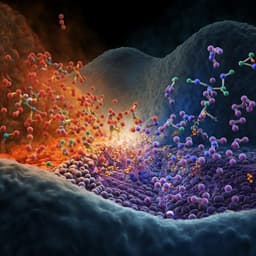
Biology
Fish-hunting cone snail disrupts prey’s glucose homeostasis with weaponized mimetics of somatostatin and insulin
H. Y. Yeung, I. B. L. Ramiro, et al.
Uncover the astonishing venomous tactics of fish-hunting cone snails, specifically *Conus geographus*, as they wield insulins and a unique SSTR2 agonist to immobilize their prey. This groundbreaking study, conducted by a talented team of researchers, reveals the complex interplay of chemical mimicry and venom components that highlight glucose homeostasis as a crucial aspect of their predatory success.
Playback language: English
Related Publications
Explore these studies to deepen your understanding of the subject.







